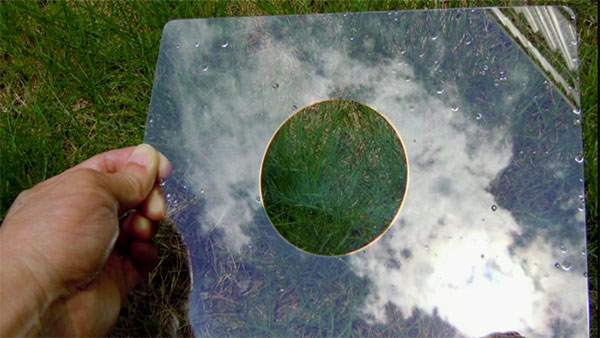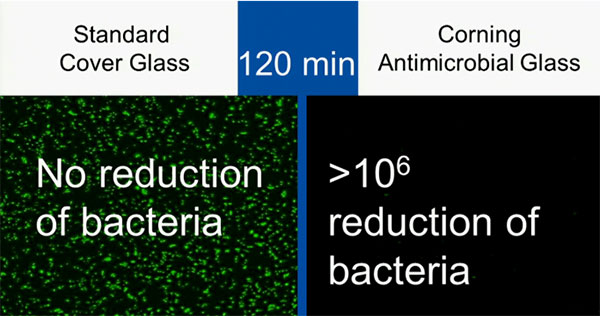In a presentation at the MIT Mobile Technology Summit, Dr. Jeffrey Evenson, senior vice president and operations chief of staff for Corning, talked about Gorilla Glass’ future. Already found on many of today’s mobile devices (some 1.5 billion of them according to Evenson), it offers remarkable durability in a very thin package. But Corning wants to further improve Gorilla Glass by enhancing its anti-reflectivity and anti-microbial properties.
We all have used our devices outside and likely complained at how difficult it is to see the screen on bright days and especially in direct sunlight. Corning is now working on new anti-reflection solutions that would reduce if not eliminate the glare, allowing us to clearly see our screens even on those sunshiny days.
In the image below, what appears to be a hole in the glass being held up is actually an area that has been treated with Corning’s anti-reflective technology:

Corning also wants to make sure our mobile don’t turn into vectors for a host of diseases and infections. It turns out that there are more germs on our smartphones than there are on public toilets. Corning is now working on antimicrobial technologies capable of killing drug-resistant bacteria and viruses. In a series of timelapsed photos, Evenson showed how Corning’s antimicrobial glass killed off nearly all the germs while they continued to thrive on a standard cover glass.

Evenson expects that Corning could begin rolling out these new technologies “in the next two years.”
Currently holding the biggest share of the tempered glass market, such innovations could continue to keep it ahead of competitors that include DragonTrail (manufactured by Asahi Glass) and sapphire glass products.
Source : MIT Technology Review Mobile Summit
